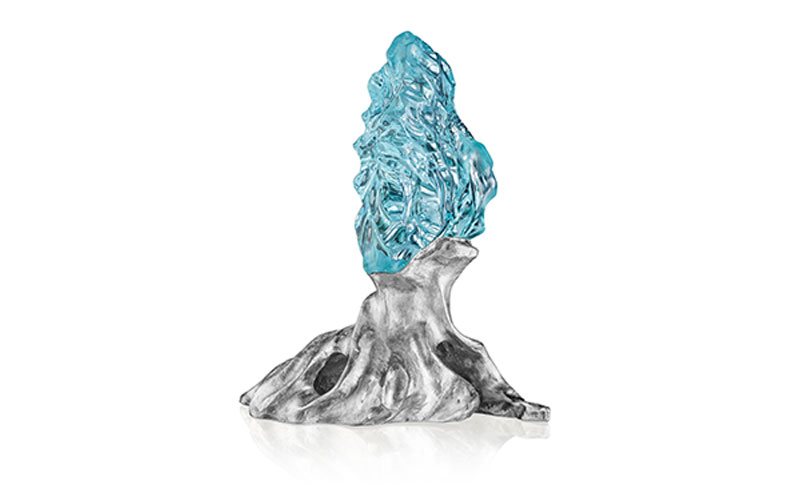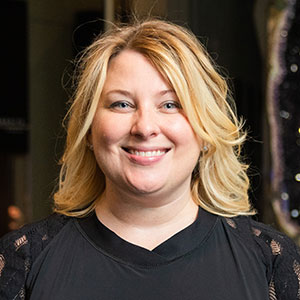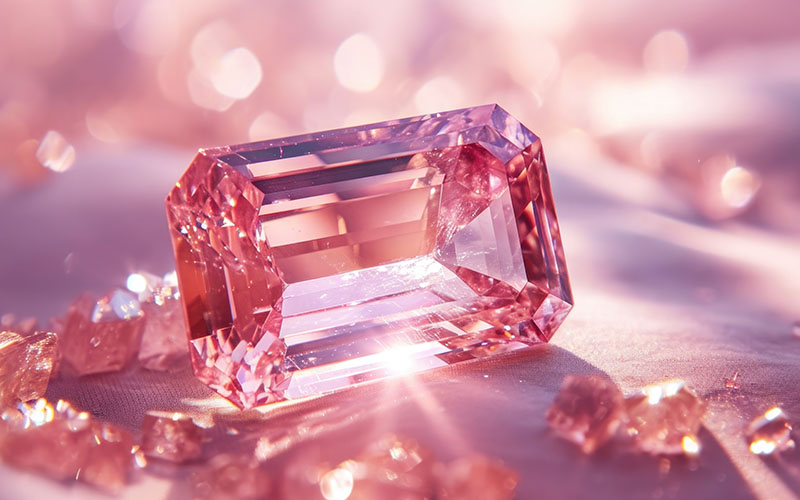
You could say that minerals and gemstones are in the DNA of artist Naomi Sarna, who grew up in Montana, walking distance from some of the world’s greatest mineral mines.
Inspired by those early years in Montana and by the sensual curves and flowing curls of the pre-Raphaelite and Art Nouveau movements, Sarna hand carves precious gems into abstract sculptures. Exploring the mystery of the curving line is central to Sarna’s work, creating a sense of movement in her art that is both lyrical and poetic.
Sarna’s larger carvings are beautiful objets d’art that can be displayed on a desk, or mantle. She sets her smaller carvings in pieces of jewelry turning them into wearable art. Sarna has won 23 Spectrum Awards from the American Gem Trade Association for both carving and design. In addition, Sarna won a silver medal and bronze medal from the Zie Gang Bei Jade Exhibition in Suzhou, China for two of her Jade carvings. Currently, over 20 of Sarna’s gemstone sculptures are on exhibition through January 2024 at the Rice Northwest Museum of Rocks and Minerals in Hillsboro, Oregon, just outside of Portland.


Kimberly Vagner, Executive Director, Rice Museum, says:
“The fluid nature of Naomi’s art evokes flowing water — waves crashing on a beach, or the swirling motion of eddies. Light dances and plays within, and off of, each piece. Look closer and you may see a change of color, or beautiful inclusions shimmering underneath the surface.”
Inclusions Create Character

Something that sets Sarna apart from other carvers is that she often selects stones for her carvings that have visible inclusions. “Inclusions create character in what is an otherwise featureless stone. What differentiates a piece of glass from a gemstone? It’s inclusions, then you know the stone is real, it identifies the genuineness of the gemstone. Inclusions themselves can be very beautiful.” Sarna notes that it can take around 400 or 500 hours to complete the carving and polishing for one of her sculptures.
Optical Illusions

When Sarna is carving, she will often highlight a special inclusion, such as a rainbow or rutile, bringing its beauty into focus. “I like to carve in a way that magnifies the inclusion to create activity, vitality and movement in a piece,” explains Sarna. “When I carve a rutilated stone, I will carve grooves into the piece to visually reduce and minimize the straight lines of the rutile. The domed areas will magnify the rutile, which will appear to twist and bend even though it actually stays straight.”
A Road Map
Inclusions do more than add beauty to a piece, they also act as guides for Sarna as she carves.
“The minute I see something, I know what I am going to do with it. Most people like stones to be clean, but I like to see things in the stone — they’re like road signs that say go here, go there,” concludes Sarna. “I try to highlight the inclusions in a gem to bring out its personality.”





